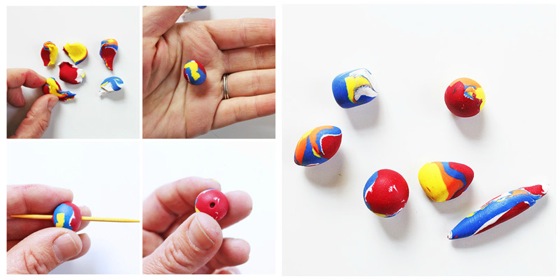I’m betting that when it comes to teaching color mixing, 99% of us, myself included, go straight for the tempera paint. We instruct students to mix the secondaries from the primaries, and then we’re done. There’s nothing wrong with this method, and it certainly is effective, but there are definitely other ways to go about things.
Today I have 3 color mixing activities that not only will inspire your students, but will get you thinking outside the box regarding teaching color theory.
1. Set up a “Mad Scientist” Lab

Dilute red, yellow and blue liquid watercolors and pour into different clear containers. To get really fancy, borrow some test tubes or other vessels from your science department. Give each student an eyedropper and a transparency set on top of a white piece of paper. Have students mix drops of different colors. To make even more of a science connection, have students write down each color experiment that they conduct, including their predictions and results.
2. Collaborate with Color Mixing Glasses
Have each student create a pair of glasses out of tagboard. You might want to have stencils available for younger students. Create lenses out of colored cellophane, having each student choose only one of the primaries to use. Then, let students experiment sharing their glasses, wearing two pairs at a time. Challenge students by asking them questions like, “Can you find a partner that helps you make the color green?” If they have blue or yellow glasses, the answer will be yes!
3. Create Color Mixing Jewelry
Give each student small pieces of red, yellow and and blue polymer clay. Have them divide their primaries into a few different pieces, then experiment mixing them together. Have them roll beads and put them on a wooden skewers labeled with their name using tape flags. Bake the beads according to package directions. When finished, have students create colorful bracelets. For an added challenge, ask students to create secondary and tertiary colors and string their beads in rainbow order. The image above is from the great blog Babble Dabble Do.
How do you teach color mixing in your classroom?
Do you have any other cool ideas to share with us?
Magazine articles and podcasts are opinions of professional education contributors and do not necessarily represent the position of the Art of Education University (AOEU) or its academic offerings. Contributors use terms in the way they are most often talked about in the scope of their educational experiences.






